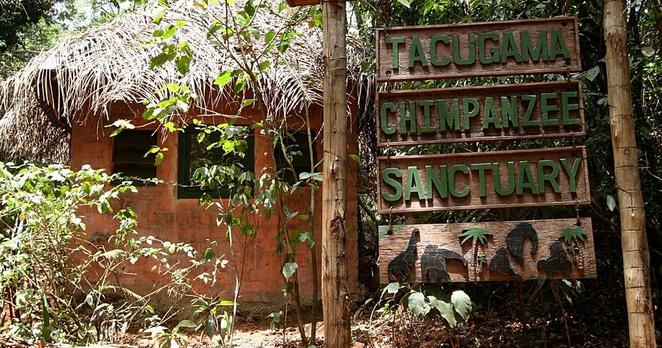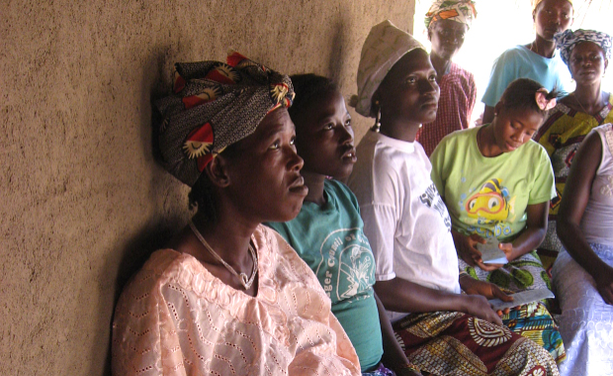A Mother from #SierraLeone, living in #Maryland 30 years, is shown on video being dragged in #Ghana after being deported
#SierraLeone
ECOWAS expels Guinea-Bissau after army general seizes power http://newsfeed.facilit8.network/TPW9dx #ECOWAS #GuineaBissau #MilitaryCoup #AfricanPolitics #SierraLeone
📰 Nederland voert druk op in zaak Leijdekkers, premier Schoof vraagt om uitlevering
https://nieuwsjunkies.nl/artikel/1oWq
🕙 09:54 | RTL Nieuws
🔸 #BolleJos #Schoof #SierraLeone #NL
Inside the place where people are hunted for body parts used for ‘magic charms’
Second épisode de la mini-série documentaire que je monte sur mon premier voyage en Sierra Leone en 2003, à partir de photos argentiques.
Cet épisode est consacré à la visite d'une camps de réfugiés originaires du Liberia, pays voisin qui était en guerre dans les années 1990, en lien avec le conflit en Sierra Leone à la même période.
#Sierraleone #humanitaire #solidarity #humanitarian #filmphotography #2003
Sierra Leone chimpanzee sanctuary reopens after securing forest protection http://newsfeed.facilit8.network/TPNH0P #SierraLeone #ChimpanzeeSanctuary #ForestProtection #WildlifeConservation #EcoTourism
British Surgeon Saves Baby’s Life by Removing Tumor the Size of her Face – For Free
J'ai commencé à faire une mini-série sur mon premier voyage en Sierra Leone, en 2003, premier de mes voyages dans un pays peu développé.
Cette époque correspond à l'émergence de mon désir et de mon engagement pour participer à des activités solidaires à l'international.
Je ne voulais pas que cela tombe dans l'oubli.
Les 5 autres épisodes de cette série seront diffusés au fil de l'eau, une fois chaque épisode terminé.
Good idea: carbon agreements based on carbon justice
Hundreds of communities in Sierra Leone’s Bonthe district have signed a benefit-sharing carbon agreement with the Africa Conservation Initiative targeting the protection of mangroves in the Sherbro River Estuary.
The agreement is based on “carbon justice principles” aimed at making carbon projects fairer for communities, such as a 40-50% gross revenue share; free, prior and informed consent, including transparency of financial information and buyers; and community-led stewardship of the mangroves
Hundreds of communities in Sierra Leone’s Bonthe district have signed a benefit-sharing carbon agreement with the Africa Conservation Initiative targeting the protection of mangroves in the Sherbro River Estuary.
The agreement is based on “carbon justice principles” aimed at making carbon projects fairer for communities.
If implemented correctly, the agreement could address “deep-rooted issues of fairness,” experts say.
by Shreya Dasgupta
https://news.mongabay.com/2025/11/sierra-leone-communities-sign-carbon-agreement-based-on-carbon-justice-principles/
Virginia Woman From Sierra Leone Fatally Stabbed By Man Who Drove Across State Lines To Commit Crime https://shinemycrown.com/virginia-woman-from-sierra-leone-fatally-stabbed-by-maryland-man-who-drove-across-state-lines-to-commit-crime/?utm_source=dlvr.it&utm_medium=mastodon #JusticeForIsha #SierraLeone #NorthernVirginia #StopViolence #CommunitySupport
Inzwischen sind die v.a. solaren #Friedensenergien auch wirtschaftlich erfolgreiche #Wohlstandsenergien. Gerade auch in ärmeren Gesellschaften wie #Pakistan und #SierraLeone boomt #Solarstrom , weil er längst günstiger ist. In #Australien wird überschüssige #Solarenergie inzwischen gar verschenkt, um den Ausbau von Smartmetern & Batteriespeichern zu fördern.
Aber gierigen Fossilisten geht es eben nicht um den allgemeinen #Wohlstand, sondern um ihre #Karbonblase.
Lieben Dank, @Dennis_Weeske - der wirtschaftliche #Kipppunkt zur #Solarenergie ist bereits in immer mehr Ländern erreicht: Von #Pakistan über #SierraLeone bis #Bayern. Auch #Elektrofahrzeuge erleben einen weltweiten Aufschwung. Umso erbitterter kämpfen, zerstören & morden die Fossilisten für die möglichst lange Ausbeutung ihrer #Karbonblase. Leider. https://scilogs.spektrum.de/natur-des-glaubens/energieglauben-und-solarpunk-solarboom-in-china-pakistan/
Africa: Sierra Leone's Economy Shows Resilience, Private Sector Reform Key to Sustained Growth and Jobs: [World Bank] Freetown -- Sierra Leone's economy is showing signs of stability in the face of heightened global challenges, with growth projected at 4.3 percent in 2025 and reaching 4.6 percent by 2027, according to the latest World Bank Sierra Leone Economic Update (SLEU) launched today in Freetown. This outlook… http://newsfeed.facilit8.network/TP72m2 #SierraLeone #Economy #Growth #PrivateSector #WorldBank
Sierra Leone’s Economy Shows Resilience, Private Sector Reform Key to Sustained Growth and Jobs
FREETOWN, November 6, 2025 – Sierra Leone’s economy is showing signs of stability in the face of heightened global…
#NewsBeep #News #Headlines #Africa(AFR) #EconomicGrowth #InclusiveGrowth #JobsandDevelopment #Latvia #LV #privatesectordevelopment #SierraLeone(SL) #SmallandMedium-SizedEnterprisesandJobs #SustainableEconomicGrowth
https://www.newsbeep.com/232676/
Sierra Leone : La violence obstétricale tue des femmes et des nouveau-nés
Le gouvernement devrait réformer certaines pratiques qui portent atteinte aux droits des femmes enceintes
Reflective #longread on waves of 'aid' to #SierraLeone ping @CrispinHughes "It is reasonable to say that the global approach to humanitarian aid needs to change. But abruptly ending projects that sustain lives and upending economies that have, over decades, become dependent on aid is so far from a solution that it undermines any part of the analysis that might be correct."
https://www.theguardian.com/us-news/2025/nov/04/they-take-the-money-and-go-why-not-everyone-is-mourning-the-end-of-usaid
‘They take the money and go’: why not everyone is mourning the end of USAID https://www.theguardian.com/us-news/2025/nov/04/they-take-the-money-and-go-why-not-everyone-is-mourning-the-end-of-usaid #SierraLeone #DonaldTrump #Worldnews #Africa #USnews #USAID #Ebola
Obstetric Violence Deadly for Sierra Leone Women, Newborns @hrw: https://allafrica.com/stories/202511030203.html?utm_campaign=allafrica%3Aeditor&utm_medium=social&utm_source=twitter&utm_content=promote%3Aaans%3Aabfzqa #SierraLeone
Geraldo Pino, Afrobeat’s Godfather
https://amf.didiermary.fr/geraldo-pino-afrobeat-godfather/
Geraldo Pino is considered, including by Fela himself, the Godfather of Afrobeat.
Geraldo Pino Biography
By Jason Ankeny / AllMusic
The acknowledged godfather of Afrobeat, Sierra Leone native Geraldo Pino laid the foundation for the West African soul and funk revolution of the 1970s.
Born Gerald Pine in Freetown on February 10, 1939, he was the […]







